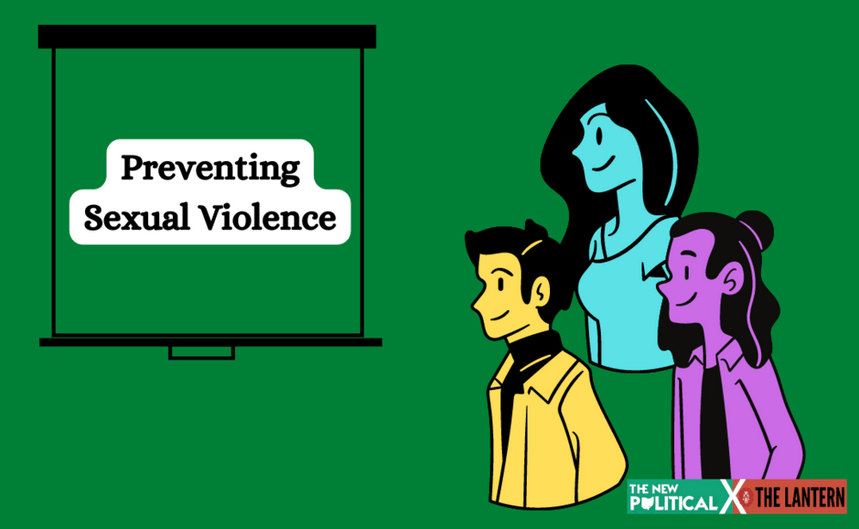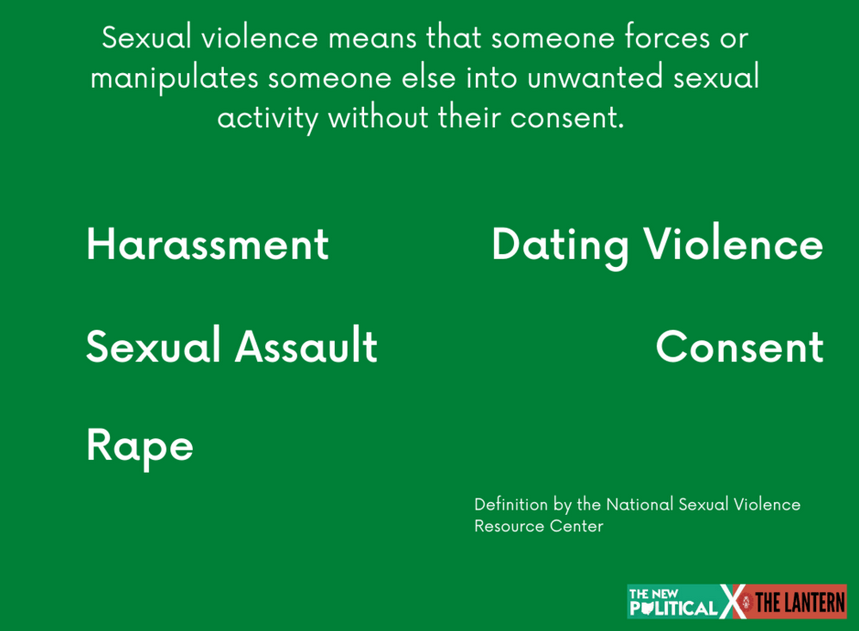


Ohio State’s The Lantern and Ohio University’s The New Political have partnered to create Students’ perception of sexual violence on campus, a look at the state of sexual violence prevalence, education and reporting on our respective campuses.
Among undergraduate students, 26.4% of females and 6.8% of males experience rape or sexual assault through physical force, violence, or incapacitation, according to a report by the Association of American Universities.
This project seeks to answer the following: How do students perceive their individual risk of experiencing sexual violence? What may deter someone from reporting an incident? How does current university-sanctioned education around sexual violence work, and how does it come up short? We’ve surveyed students from both universities about these topics, and spoken with experts.
We also offer on- and off-campus sexual violence resources, from how to report an incident to available support options.
Education as prevention
Education as prevention
Story: Becca Duncan
Illustration: Marcy Paredes | Managing Editor for Design
When incoming freshmen complete the “U Got This!” module — Ohio State’s sexual violence education course for first-year students — before coming to campus, it may seem like just another thing on the to-do list. However, this course is one piece of the puzzle that makes up Ohio State’s sexual misconduct education.
DATA: Ohio U and OSU student perceptions of sexual violence survey, 2021-2022 ECRC data
DATA: Ohio U and OSU student perceptions of sexual violence survey, 2021-2022 ECRC data
Visualizations: Marcus Horton and Izzy Keller
Illustration: Emily Crebs
Story: Madeline Harden
Illustration: Emily Crebs
Intersectional education is a vital aspect in prevention of sexual violence, especially on college campuses. Any federally funded institution is required to provide sexual violence education programs.
(un)silenced: Journeys through Ohio State’s Title IX process
(un)silenced: Journeys through Ohio State’s Title IX process
Story: Sarah Szilagy and Maeve Walsh
Web Design and Audio: Jack Long
Graphic Design: Ivan Kostovski
Video: Owen Milnes
Five courageous women came forward to share their experiences with sexual violence on Ohio State’s campus and the institutional processes they went through to make their voices heard.
Story: Izzy Keller
Illustration: Emily Crebs
After experiencing an incident of sexual misconduct, it is not uncommon for survivors to feel depressed, alone, out of control or anxious.
At Ohio University, there are resources available to aid survivors.
Defining Sexual Violence
Defining Sexual Violence
Story: The New Political
Illustration: Emily Crebs
Sexual violence means that someone forces or manipulates someone else into unwanted sexual activity without their consent.
Being a better bystander
Being a better bystander
Story: Claire Del Vita
Illustrations: Emily Crebs
By remaining silent during an assault, we allow it to escalate further than it should and cause more harm to the victim than has already been done. The inaction of nearby individuals associated with an assault is commonly referred to as the bystander effect.
What students think universities can do better to combat sexual violence on OSU and Ohio U’s campuses:
What students think universities can do better to combat sexual violence on OSU and Ohio U’s campuses:
All responses come from anonymous student respondents.
“Teach people to not assault other people instead of teaching people to protect themselves. Protection is important but it should be stopped before it even happens.”
“Make education courses more specific to consent and the conversation around giving consent under the influence of alcohol. It is known that if someone is intoxicated, they cannot give consent but this doesn’t prevent a lot of college students from engaging in sexual activity under the influence anyway. There is too much of a gray area and I think that’s something that should be discussed.”
“Provide more resources, advertise them more, and provide more comprehensive education on prevention of sexual violence. Additionally, promoting a community that looks out for one another and keeps each other safe would go a long way. Making sexual violence a non-gendered issue would also go a long way, because viewing it as a ‘women’s issue’ lets men check out of the conversation.”
“The root causes go way beyond what a university can do- but universities should educate about consent and demand a full, thorough investigation for every sexual assault allegation.”
“I think the university needs to actually make the process of reporting SAs through the school’s office clear to every person. i have heard so many horror stories about victims reporting their experience only to be met with more negative experiences. if the school ensured the process would be in favor of the victim, i think more ppl would actually report their experiences and we would actually be able to fully understand how much of an issues sexual violence is on our campus.”
Artwork by Marcy Paredes
Web Design by Marcus Horton








